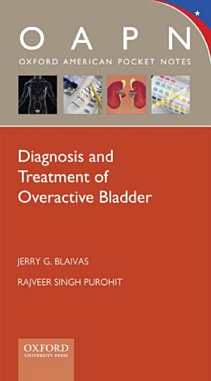BPH Diagnosis and Treatment
How do you Diagnose BPH or an Enlarged Prostate Gland?
The diagnosis of BPH is made by a doctor who should take a careful medical history focusing on urinary symptoms such as urgency, frequency, nocturia, double voiding, urinary hesitancy, and a weak urinary stream. Additional clues suggesting a diagnosis of BPH include episodes of urinary retention or urinary tract infections and hydronephrosis (a swelling in the tube that connects the kidney to the bladder) seen on radiographic imaging. The examination should be a full physical exam including a digital rectal exam to evaluate the prostate.
Laboratory analyses that are useful include tests for kidney function (creatinine) and a PSA (prostate specific antigen) that has been commonly used for screening for prostate cancer but is also a useful surrogate for prostatic size. In addition to this, we routinely assess the urinary flow rate using a machine that measures the speed of urination. A slow speed suggests either an obstructed urinary flow or a weak bladder muscle – both of which can be caused by BPH. An ultrasound done after urination can determine the presence of any residual urine and suggest the degree of obstruction. In patients who have evidence of symptomatic BPH we routinely use a 24 hour voiding diary to clarify and quantify urinary symptoms.
Other tests that can help determine the severity of BPH include an ultrasound of the prostate to determine its size and an ultrasound of the kidneys to rule out evidence that urine has backed up the ureters from the bladder into the kidneys (hydronephrosis). In some patients, a cystoscopy, a procedure which uses a small scope to look inside the urethra, prostate and bladder under local anesthesia, and a video-urodynamics, which assess bladder and prostate function and determines the extent of prostate obstruction, can be very helpful.
How do you Treat BPH or an Enlarged Prostate Gland
Once the diagnosis of BPH has been made, patients and doctors have a number of options for treatment. Not all patients who have BPH need to be treated. If symptoms are not bothersome and patients do not have a history of recurrent infections, bleeding, or evidence of bladder or kidney damage, in consultation with their urologist, patients may safely choose to just closely monitor their condition. We call this active surveilliance. For patients who choose to be treated, options include medications or surgical procedures.
What Medications Can be Used to Treat BPH?
Broadly speaking, there are two classes of medications available for treatment of BPH: alpha-blockers and 5-alpha reductase inhibitors. Alpha-blockers, which affect the smooth muscle in the prostate, tend to decrease its “tension” and include medications such as Tamsulosin (Flomax®), Alfuzosin (Uroxatral®), Silodosin (Rapaflo®), Terazosin (Hytrin) and Doxazosin (Cardura). Side effects are not common but include lightheadedness, headaches and decreased ejaculated volume. The 5-alpha reductase inhibitors work by decreasing the effects of testosterone on the prostate and include finasteride (Proscar®) and dutasteride (Avodart®). Unlike alpha-blockers, they work by decreasing the size of the prostate gland. Side effects include decreased ejaculatory volume, erectile dysfunction and decreased libido. Some patients may find benefit by taking a medication from both classes.
How do you Treat BPH if Medications do not Work?
Medications usually provide some benefit for most patients but the most dramatic improvement in symptoms usually occurs from surgical treatment of BPH. Dr. Blaivas is the expert at all of the surgical procedures for BPH. There are many variations of procedures that can be done, some of which are minimally invasive. These office-based treatments use heat or some other form of energy to reduce the size of the gland or increase the “channel” in the prostate through which urine passes during urination. The most common of these procedures is microwave thermotherapy. They are typically done under light sedation and local anesthesia and are well tolerated by patients. The “gold” standard has traditionally been considered a transurethral resection of the prostate (TURP). In this procedure, a resectoscope is placed into the urethra and the prostate is “cored” out from the inside-out, leaving a rim of outer prostate behind and a large cavity where once obstructing tissue existed. The procedure has high success rates in appropriately diagnosed and selected patients, hence the term “gold” standard. Common side effects include blood in the urine and longer lasting decreased quantity of ejaculate. Patients also experience longer hospital stays and some may need to have a temporary Foley catheter after the procedure.
What about laser ablation surgeries for BPH?
An alternative to a standard cautery TURP is the GreenLight® laser photoselective vaporization of the prostate (PVP), also called KTP for the type of laser used. It has equal efficacy and a substantially lower chance of bleeding and other side effects. The KTP laser TURP does require anesthesia but occasionally patients can be discharged home the same day after surgery. The main disadvantage is that it takes a liitle more time and also removes less prostatic tissue than a TURP, so we continue to prefer it in patients with very large prostates. Another advantage is its safety in patients using blood thinners.
Summary
In summary, BPH is a disorder that becomes more common in men as they age and can be diagnosed based on a thorough physical exam, history and diagnostic tests. Symptoms typically include urinary frequency, urgency, slow urinary stream and nighttime voiding. If left untreated, patients can develop urinary infections, bladder damage, retention and even kidney failure. Quality of life can be greatly impaired. However, the majority of men can be treated with relief of their symptoms with medications or surgery, with minimal adverse effects. There are many other variations of BPH treatments, and it is important that patients understand the different advantages and side effects of each and use a doctor familiar, experienced, and well-trained in the procedure.
Request an Appointment











